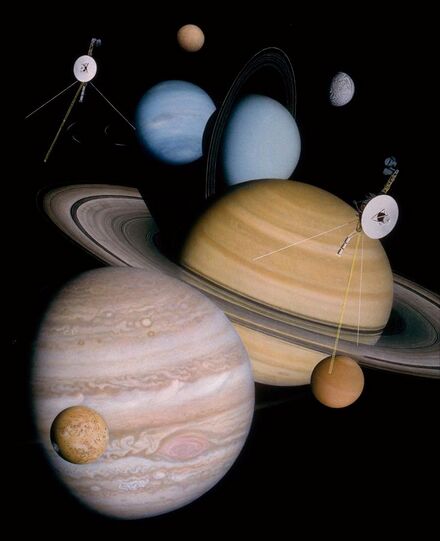Engineering:Interplanetary mission

An interplanetary mission is a voyage or trip through outer space involving more than one planet. As of 27 March 2020, there have been no manned interplanetary missions. So far, all manned missions have been in Earth's orbit or to its Moon. A large number of robotic interplanetary missions have been performed by the NASA, the Soviet Union (and later by Roscosmos), Indian Space Research Organisation, Japan Aerospace Exploration Agency and the European Space Agency.
The Apollo Applications Program planned a three-month interplanetary mission to Venus using Apollo hardware in the 1970s.[citation needed] The American space agency NASA intends to be able to launch a manned interplanetary mission to Mars by some time after 2030 under the Vision for Space Exploration.[citation needed] The European Space Agency has the long-term vision of sending a human mission to Mars by 2030 under the Aurora Programme.[citation needed]
The first interplanetary mission to fly past another planet was the Soviet Union's Venera 1.[citation needed] The robotic spacecraft was intended to enter into orbit around Venus, but suffered a malfunction and radio contact with the spacecraft was lost. The defunct Venera 1 passed within 100,000 km (62,000 mi) of Venus before entering a heliocentric orbit. The United States' Mariner 2 became the first successful interplanetary mission in December 1962 when it collected data within 35,000 km (22,000 mi) of Venus.
The Soviet Union's Venera 3 crashlanded on Venus in March 1966 without returning any data on the planet, although technically becoming the first manmade object to land on another planet. In October 1967, the Soviet Union's Venera 4 became the first successful interplanetary mission to land on another planet.
The United States' Mariner 10 became the first successful interplanetary mission to visit more than one planet outside Earth's planetary system. Mariner 10 flew by Venus once, in February 1974, and flew by Mercury three times, in March and September 1974, and March 1975.
There are currently five spacecraft on trajectories which either will or have already taken them out of the Solar System, depending on the definition used to determine the Solar System's boundary. These probes are Voyager 1, Voyager 2, Pioneer 10, Pioneer 11 and New Horizons, all launched by the United States.
Of that group Voyager 1, Voyager 2, and New Horizons are still functioning as of 2018 and supported by active missions, with New Horizons being directed to pass by another body. The announcement of a possible Planet Nine opens the possibility of future spacecraft making transneptunian journeys to new planets, although beyond Neptune there is only known to be exoplanets. Journey's to exoplanets are usually covered under the topic of interstellar travel, although the possibility of a rogue planet closer to Earth but not orbiting star may put an exoplanet more in reach.
See also
- Interplanetary contamination
- Planetary protection
- Timeline of planetary exploration.

